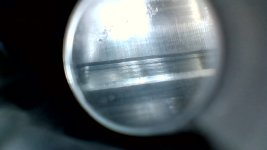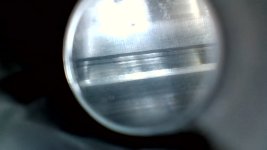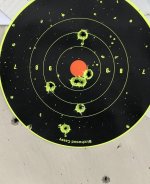So I bought a TC Compass in 30-06 the the gun was always filthy after shooting and hard to clean. It also had a somewhat short throat. I made the mistake of looking down the barrel with a bore scope and it had a lot of tool marks. I used the tubbs final finish bullet sytem, 50 bullets, 5 different grits, 1 rounds per grit with a cleaning in between.
In short, it did work, but not as well as I had hoped and not consistently throughout the barrel.
I only took 1 before, but the before was fairly consistent over the length of the barrel, a little better in some places than others, much better on the lands.
Before

After 1 and 2


In short, it did work, but not as well as I had hoped and not consistently throughout the barrel.
I only took 1 before, but the before was fairly consistent over the length of the barrel, a little better in some places than others, much better on the lands.
Before
After 1 and 2



